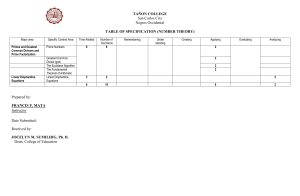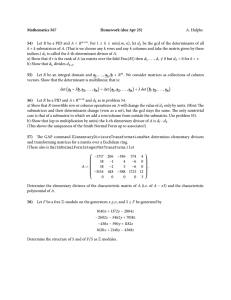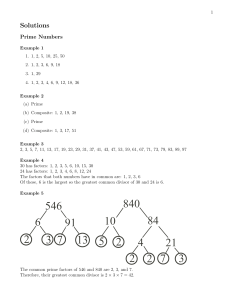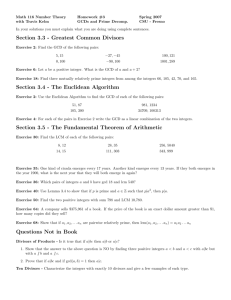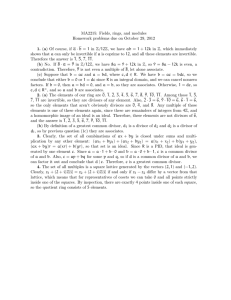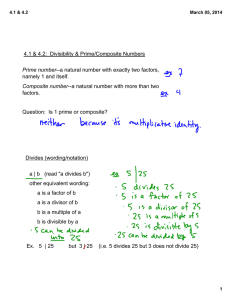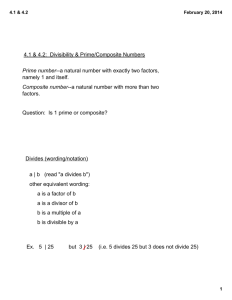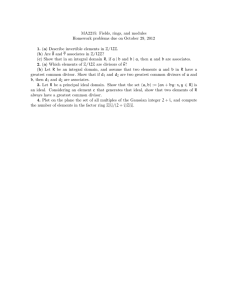The Greatest Common Divisor
advertisement
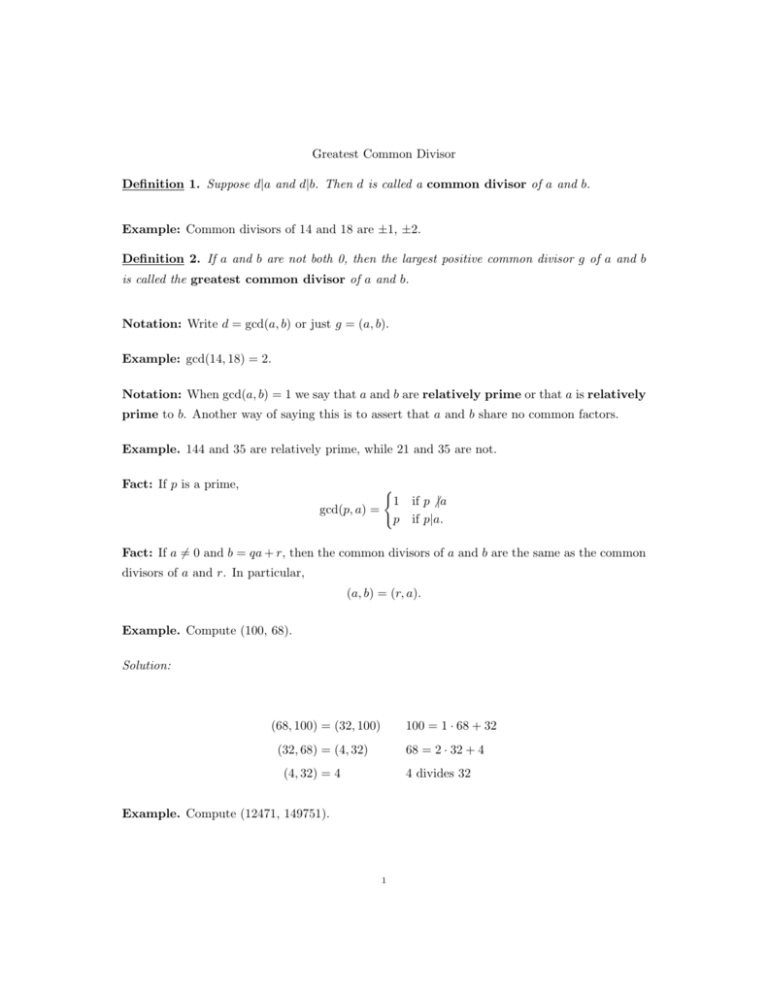
Greatest Common Divisor Definition 1. Suppose d|a and d|b. Then d is called a common divisor of a and b. Example: Common divisors of 14 and 18 are ±1, ±2. Definition 2. If a and b are not both 0, then the largest positive common divisor g of a and b is called the greatest common divisor of a and b. Notation: Write d = gcd(a, b) or just g = (a, b). Example: gcd(14, 18) = 2. Notation: When gcd(a, b) = 1 we say that a and b are relatively prime or that a is relatively prime to b. Another way of saying this is to assert that a and b share no common factors. Example. 144 and 35 are relatively prime, while 21 and 35 are not. Fact: If p is a prime, ( 1 gcd(p, a) = p if p 6 |a if p|a. Fact: If a 6= 0 and b = qa + r, then the common divisors of a and b are the same as the common divisors of a and r. In particular, (a, b) = (r, a). Example. Compute (100, 68). Solution: 100 = 1 · 68 + 32 (68, 100) = (32, 100) 68 = 2 · 32 + 4 (32, 68) = (4, 32) (4, 32) = 4 4 divides 32 Example. Compute (12471, 149751). 1
